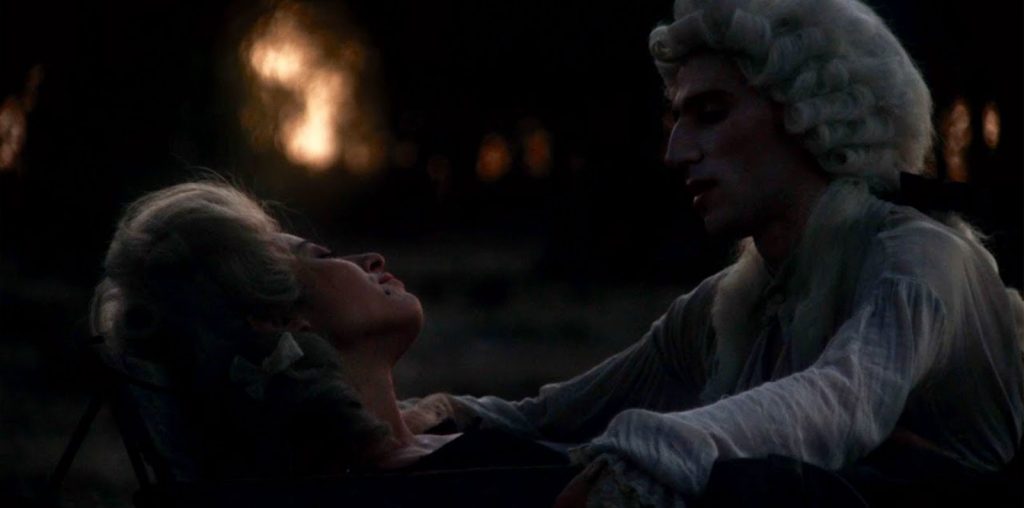
The girl in the photograph is gorgeous. Her eyes are twin pools of passion, and her lips…Mona (Wallace), a casting agent for a fledgling film company, stares at the headshot of Sara (Sullivan). Unhappy with her current relationship with Sam (Lariviere), a writer, she finds herself wondering for the first time what all the commotion is about.
Meanwhile, Sam has affixed his gaze on the beautiful young girl across the street (Abella). He does this using a telescope from his bedroom. Mona catches him spying with his pants around his ankles and decides to hunt down her mystery girl. She calls her in for an audition, and discovers that the object of her affection cannot act (her perfectly dreadful reading is actually pretty good compared to some I’ve seen). Sara is dismissed by the director, but Mona catches up to her in the bathroom, where they seem to hit it off.
Soon, Sara is trying on clothes with Mona. Sam starts a dialogue with the girl across the way, and finds out she still lives with her parents (Warning! Warning!) Sara invites Mona to a party, and gives her a see-through top to wear. Mona and Sam fight because she wears it without a bra. Sam leaves the party and heads back to his dream girl, while Mona corners Sara in the bedroom. But do they both get what they want?
“Watching Myself” has nothing new to say about modern relationships, but that’s ok; the acting and the dialogue make it a welcome addition to the stable. Newcomer Krischer seems to understand the politics of obsession inside and out, and there are several truthful moments: the moment at the party when Mona realizes that her feelings are not going to be reciprocated, the careful way Sara lets her down; the way two people who have been together for many years can communicate in shorthand.
Wallace as the love struck Mona is a very appealing lead. She has great features and a terrific intelligence about her, and it makes her downfall even more sad. Sullivan has a tricky role as Sara, and plays it well; she has to tell the truth without hurting her friend, and she does a good job of underplaying the pain.
Krischer has filled the soundtrack with an eclectic mix of songs from groups I have never heard of like Barbuda and Your Team Ring, and it was a good move; the music enhances rather than overpowers the film. The black and white photography by Irene Stamos is also used to great effect.
